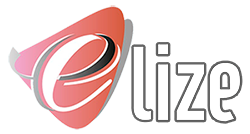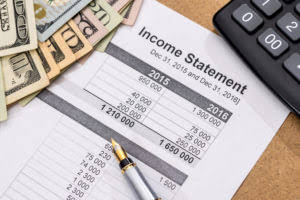That is why accountants will refer to a past cost as a sunk cost. Incremental CostWhere different alternatives are being considered, relevant cost is the incremental or differential cost between the various alternatives being considered. The company is concerned about the loss that is reported by Production Line B and is considering closing down that line. Closing down either production line would save 25% of the total fixed costs. The opposite of a relevant cost is a sunk cost, which has already been incurred regardless of the outcome of the current decision. A sunk cost refers to a cost that has already occurred and has no potential for recovery in the future.
- Decision-making is a process of identifying the best course of action.
- This means that a relevant cost is not going to be depreciation or notional rent, for example.
- A.) The depreciation of the old machine, $5,000, is irrelevant since the company will continue to depreciate the machine until the end of its useful life.
This means that the cost will increase or maybe the revenue will increase in direct relation to a particular decision. The second assumption is that this is a one-time order, and therefore represents a short-run pricing decision. If Tony’s T-shirts expects future orders from the high school at the $17 per shirt price, the company must consider the impact this might have on long-run pricing with other customers. That is, regular customers may hear of this special price and demand the same price, particularly those customers who have been loyal to Tony’s T-shirts for many years. Tony’s might be forced to lower prices for regular customers, thereby eroding the company’s profits over time.
If the vendor can provide the component part at a lower cost, the furniture manufacturer outsources the work. Assume, for example, a passenger rushes up to the ticket counter to purchase a ticket for a flight that is leaving in 25 minutes. The airline needs to consider the relevant costs to make a decision about the ticket price. Almost all of the costs related to adding the extra passenger have already been incurred, including the plane fuel, airport gate fee, and the salary and benefits for the entire plane’s crew.
What Is Relevant Cost in Accounting, and Why Does It Matter?
Cost of machine – this is a relevant cost as $2.1m has to be paid out. An avoidable cost is a cost that is not incurred if the activity is not performed. These costs are often identified as variable costs, which vary based on production. An unavoidable cost is a cost that is still incurred even if the activity is not performed. ABC Company is currently using a machine it purchased for $50,000 two years ago. It is depreciated using the straight-line depreciation over its useful life of 10 years.
- The decision taken makes that cost relevant, meaning if that decision is not taken the costs will be avoided.
- Some managers may want only this type of summary information, whereas others may prefer more detailed information.
- A matter is relevant if there is a change in cash flow that is caused by the decision.
- Fixed costs other than depreciation expense will remain at $30,000.
- All other costs are sunk costs, meaning they have already been incurred and cannot be changed by the decision.
- Irrelevant costs are the costs that do not change as a result of a decision.
In cost accounting, relevant costs are costs that will contribute to achieving the organisation’s revenue-generating objectives. For an organisation to achieve its profit objectives, the revenues must exceed the relevant costs. Relevant costs should be considered if the organisation’s purposes change. For example, the differential amount of $1,000,000 for revenue indicates Alternative 1 produces $1,000,000 more in revenue than Alternative 2. The differential amount of $750,000 for variable costs indicates variable costs are $750,000 higher for Alternative 1 than for Alternative 2.
Are you sure you want to delete your contribution?
‘Relevant costs’ can be defined as any cost relevant to a decision. A matter is relevant if there is a change in cash flow that is caused by the decision. In the famous example of Toyota Japan; when they adapted the JUST IN TIME (JIT) approach, they outsourced many products to suppliers. That make or buy decision would not have been taken without careful considerations about product quality, costs, and profitability measures. A manufacturing facility often faces this situation when receiving a customized order.
What Are Relevant Costs – Meaning and Types
For example, if a product line is eliminated, these costs are simply allocated to the remaining product lines. Opportunity costs—the benefits foregone when one alternative is selected over another—are differential costs, and must be included when performing differential analysis. Sunk costs—costs incurred in the past that cannot be changed by future decisions—are not differential costs because they cannot be changed by future decisions. Absorption costing is where we take a piece of the fixed overhead and we allocate it and absorb it into each unit that’s produced.
Irrelevant Costs vs. Relevant Costs
When using cost-plus pricing, it is important to establish in advance which costs are to be included for pricing purposes. An example of how to use Excel to perform differential analysis for the special order scenario presented in Figure 4.12 “Special Order Differential Analysis for Tony’s T-Shirts” is shown here. Although many accounting courses do not require the use of computer spreadsheets, you are encouraged to use spreadsheet software like Excel when preparing homework or working review problems.
Fixed costs, such as a factory lease or manager salaries, are irrelevant because the firm has already paid for those costs with prior sales. These would be costs and revenues that we would not consider in short-term decision making. There are four main non-relevant costs that we’re going to run through – sunk costs, committed costs, notional costs, and fixed costs. The next feature is that relevant costs are incremental in nature.
Example of Relevant Costs
Say, for example, that 4 hours of labour were simply removed by ‘sacking’ an employee for four hours, one less unit of Product X could be made. Using the contribution foregone figure of $24 is the net effect of losing the revenue from that unit and also saving the material, labour and the variable costs. In this situation however, the labour is simply being redeployed so $24 understates the effect of this, as the labour https://quick-bookkeeping.net/ costs are not saved. Note that additional fixed costs caused by a decision are relevant. So, if you were evaluating the viability of a new production facility, then the rent of a building specially leased for the new facility is relevant. Irrespective of how the company might use the floor space in the factory to generate a return, there is no change in cash flow relating to the rent as a result of the new machine.
F Fixed costs that cannot be traced directly to a product line. All the required quantity of oil is currently available in stock. The cost of oil that will be used on the order is $1,000.The current market value of the required quantity of oil is $1,200. If oil is not used on the order, it could https://business-accounting.net/ be used in the production of other tires. Material – if the buy-in option is accepted, the material cost increases from $12 to $15 per unit. The closure of Production Line A would also result in the revenue lost being greater than the value of the costs saved, so this isn’t a good idea either.
Committed CostsFuture costs that cannot be avoided are not relevant because they will be incurred irrespective of the business decision bieng considered. Relevant cost, in managerial accounting, refers to the incremental and avoidable cost of implementing a business decision. This is not worthwhile https://kelleysbookkeeping.com/ as incremental costs exceed incremental revenues. Annual insurance cost – this is a relevant cost as this is an additional fixed cost caused by the decision to invest. Sale proceeds – this is a relevant cost as it is a cash inflow which will occur in 10 years as a result of the decision to invest.
Relevant costs have three features, and then there are also two other types of relevant costs that we need to be aware of. This effect is known as an opportunity cost, which is the value of a benefit foregone when one course of action is chosen in preference to another. In this case, the company has given up its opportunity to have a cash inflow from the asset sale. A big decision for a manager is whether to close a business unit or continue to operate it, and relevant costs are the basis for the decision.




